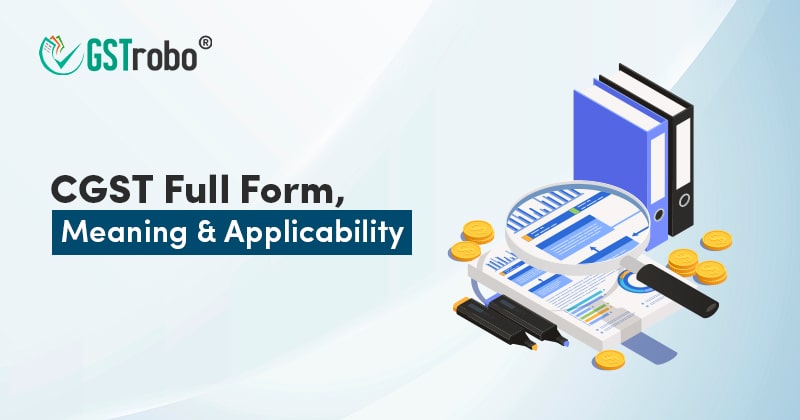CGST Full Form, Meaning, and Applicability
The Goods and Services Tax (GST) is a reformative taxation system introduced by the Government of India in the year 2017. GST was implemented with the goal of “One Nation, One Tax.” The 4 major tax components under GST are CGST, SGST, UTGST, and IGST.
In this blog, we will provide detailed information on CGST in this blog, such as the full form, meaning, and applicability of CGST.

CGST Full Form and Meaning
The full form of CGST is Central Goods and Services Tax that is levied on intra-state transactions. CGST and IGST both the taxes are collected by the central government. As per Section 15 of the CGST Act, 2017, this tax, like other GST taxes, is levied on the transaction value of goods and services delivered. CGST is governed by Central Goods and Services Tax Act (CGST Act) 2017.
Note: The price paid or due for a certain supply of goods or services is referred to as transaction value.
Important Aspects of CGST
The following are some of the most important aspects of the CGST:
- The CGST is imposed on all products and services delivered for a fee.
- The CGST Act 2017 governs each state’s Goods and Service Tax Department. Rates, valuation, taxable event, measure, classification, and other basic components of GST legislation for all states will be similar throughout each state’s CGST department.
Applicability of CGST, SGST, and IGST
To see if the Central Goods and Services Tax (CGST) applies to a taxable transaction, you must first figure out if the supply is intra-state or inter-state.
When the supplier’s location and the place of supply, i.e., the buyer’s location, are both in the same state, it’s called intra-state supply. In a transaction involving supply within the state, a seller must collect both CGST and SGST from the customer. The Central GST is deposited with the central government, whereas the State GST is deposited with the State government.
Inter-state supply occurs when the supplier and the location of supply are in different states. When goods or services are exported or imported, or when products or services are supplied to or by an SEZ unit, the transaction is deemed to be inter-state. In a transaction involving supplies between two states or beyond the state, a seller must collect IGST from the consumer.
Applicability of CGST, SGST, and IGST with an example
For INR 1,000,000, a UP-based dealer is selling a Laptop to a customer situated in UP. A 14 percent CGST and a 14 percent SGST will apply to this transaction. The dealer in UP will be obliged to charge INR 14,000 as CGST and INR 14,000 as SGST, with the relevant amounts paid in the Central and State Government accounts.
The dealer from UP (in this case) is now supplying this laptop to another dealer in Mumbai. Because this is an interstate transaction, the UP dealer will charge IGST of 28%, or INR 28,000, on the value of the laptop INR 1,00,000 and deposit the IGST payment received into the government account.
